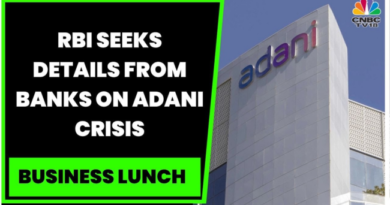Clearing the Digital BLUR™ for the banking Industry
In the late 90s when the Automated Teller Machines (ATMs) were struggling for the trust vote and the multi-city cheques were a thing of future, intercity travellers would judiciously use the available cash till ATM’s got vote of confidence when the money could be withdrawn anytime. Since then we have experienced several banking eureka moments which have come every several years.
15 years later, today, we are living in the VUCA (Volatility Uncertainty Complexity Ambiguity) world which would only grow. The contemporary whirlwind of digital disruptions has ambushed the banking industry to assess their digital capabilities almost on a daily basis. Banking has become fragmented with the new age nimble companies solving a particular banking issue, which makes it challenging for a large bank to compete with niche offerings from fintech. Fintechs as being observed are disrupting the banking industry by taking and delivering niche banking components. To stay up-to-the-minute banks need to embrace Digital BLUR™. and be aware across its omni-channel models making it convenient for the organisation, employees and the customer. Discussing Digital BLUR™ being:
- B – Boundaryless banks: Globally the banking vertical is experiencing the great “unbundling.” Traditionally the last mile benefit of a product or a service transcended through a value chain; where the customer was at the end of the value chain. In current scenario the customer is at the centre of the value chain. Conventionally banks focussed on product delivery be it loans, insurance or fund management – it was a static product selling model. Let us evaluate the working model of a highly regulated large private bank, the fintech version of bank has transformed it into a platform. A multifaceted platform which is not only a virtual bank but also a lifestyle kiosk selling movie ticket and other products. In-fact the claim goes that a significant number of the bank’s revenue is coming from purchase of movie tickets. Banks, traditionally gatekeepers of customers’ money are now also their lifestyle partner.
- L – Limitless Digitization: One of India’s largest public bank is building a big data lake, a one-point data processing and storing warehouse, to analyse vast pools of data to enhance customer offerings. A private Indian bank has tied up with the fintech player to facilitate cross border money transfers using latter’s blockchain technology. Digitisation has completely altered the concept of money and money matters.
A global analytics giant asserts that banks around the world are aggressively driving customer interactions to digital channels to lower the cost of doing business. Banks are facing a sweeping transformation of customer habits, with Gen Y migrating to online and mobile banking while Gen X demands more consulting services with a human touch. In India we are seeing the branch size has shrunk from 2500 sq.mt. to 1200 sq. mt space. In-fact most of the private Indian banks claim that 90% of the customers have not visited any of their branches, the modern customers are accessing the banking services through a mobile phone, online or via tele-callers.
At a time when banks are assessing a prospect’s credit health through the latter’s digital transaction footprint right from app-based cabs pay outs to weekly grocery bills; Bill Gates vision “Do you think someday we can open bank account or ask for loan without physically have to come to the bank?” seems to be a thing of past.
- U – Unbounded Innovation: Limitless Digitization is complemented by unbounded innovation. Banks are not only using digital first innovations to benefit their end customers or channel partner eco-systems but also for talent transformation.
- A public sector bank has partnered with KNOLSKAPE to help incubate leadership mind-set in the company’s area managers to take charge as branch sales managers, while doing so the bank’s team came out with ideas which were being implemented as the transformation was being taken.
- Digital innovations like Robo-advisory which have almost zero to negligible registration fees and use an algorithm in the back end to manage funds is a boon for millions of people who don’t have access to personalised financial advice. Backed by analytics, the backend algorithms study the market trends and attribute the investors’ money to respective funds accordingly.
- A Google KPMG report predicts 536 million Indian Language users by 2021. Indic language users are going to steer the next Internet growth story for India. Localisation of digital channels of banking is imperative to achieve a “Digital India” and digital financial inclusion.
At the behest of a bank’s digital transformation is data, analytics, algorithms, IOT and robotics taking over the minion jobs.
- R – Relentless Iteration: A bank’s digital footprint needs to be constantly worked upon to enhance customer experience. A mobile banking app for example cannot remain static for a long time; it needs to continue building a unique user experience every other day.
Banking and Financial Sector (BFSI) sector besides specialising in money matters need to start thinking like a technology company to ride the digital wave.
By Rajiv Jayaraman, Founder & CEO, KNOLSKAPE
About the Author
Rajiv Jayaraman is the CEO & Founder of KNOLSKAPE.
Rajiv provides overall leadership and direction in strategic areas such as customer success, product roadmap, talent acquisition and growth strategy. After experiencing the power of a differentiated learning intervention during his MBA days at INSEAD, he founded KNOLSKAPE in 2008 with the vision of helping corporates maximize the potential of their people talent, using technology as an enabler.
Under Rajiv’s leadership, KNOLSKAPE has grown into a leading player in the talent transformation
space, with 200+ clients across 17 countries. He brings focus on meeting the needs of the company’s global customers, and constantly strives to achieve ever higher levels of organizational excellence and customer satisfaction by encouraging responsibility and accountability at all levels.
A Thought Leader and a TEDx speaker, Rajiv is a visiting faculty at SP Jain Center of Management, Singapore and Dubai, and has delivered guest lectures at INSEAD, IIM-Bangalore, IIT-Madras, IIFTDelhi, NMIMS and MICA. He is frequently invited for corporates and industry events to speak about building digital mindsets, managing innovation, and modern workplace learning. He has been featured in The Economic Times, Business Standard, CNBC Young Turks, ET Now, Digital Learning magazine, Entrepreneur magazine and Yourstory.in.
Prior to founding KNOLSKAPE, Rajiv worked at Oracle USA in the server technologies division. Rajiv earned his bachelor’s degree in Computer Science from BITS Pilani, Master’s in Computer Science from University of Alabama, Huntsville, followed by an MBA from INSEAD. He enjoys playing musical instruments and has keen interest in theater and film making.




